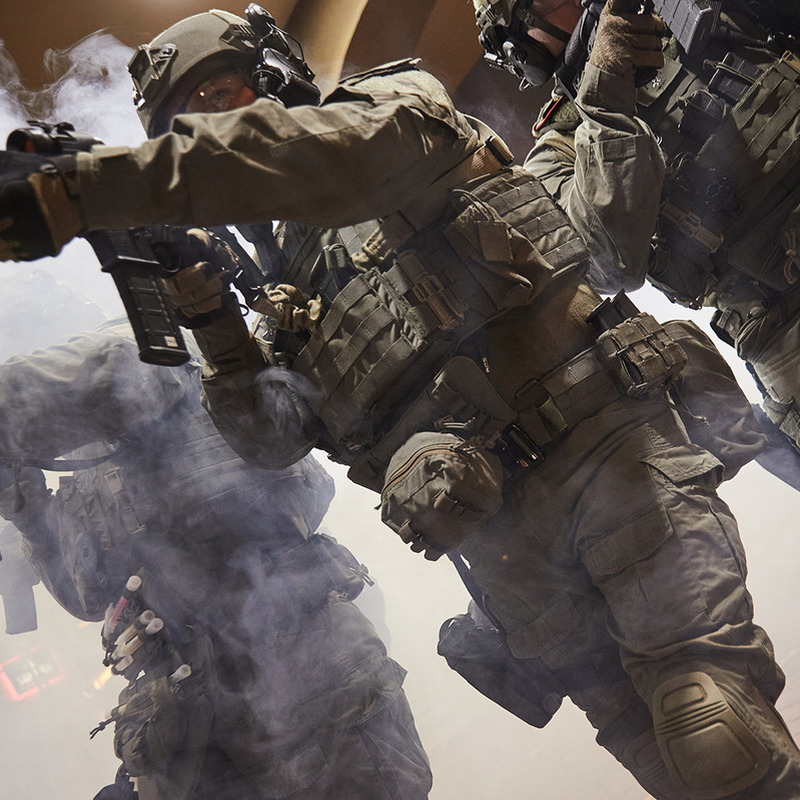What is Duty Rated Retention?
Manufacturers use different methods, tests, and terminology for their ratings, so be sure to know what you’re buying and to learn the difference.
Safariland’s Retention Level ratings give holster buyers a clear guide to understand the relative threat protection provided by a holster’s design and security devices. Our Duty Rated Holsters are categorized into four different Retention Levels based on the number of hand movements required to clear the security mechanisms before the firearm can be drawn.
Duty Rated Level 1 – 1 Distinct Hand Motion
Duty Rated Level 2 – 2 Distinct Hand Motions
Duty Rated Level 3+ – 3 Distinct Hand Motions
At Safariland, passive retention is not considered a retention level. Safariland continually refines its criteria for retention testing. To achieve a duty rating at Safariland, a holster must pass Safariland’s testing procedure for a given Retention Level while attached to an approved Safariland mounting device and duty belt.
Which Level is Right For you?
Explore the Retention Levels below to find out which is right for you.
DUTY RATED LEVel I RETENTION™ Holsters
This is the most popular retention level for military and competitive shooters, as it firmly locks the firearm into place, keeping it from dislodging during running or moving through obstacles.
A Safariland Duty Rated Level I Retention holster is equipped with the ALS® (Automatic Locking System), which requires one manual hand movement to release the firearm from the holster. All Safariland Duty Rated Level 1 Retention Holsters must pass the Safariland Retention Level Test, a six-part simulated thirty-second “grab and snatch” initiated by an adversary.
Duty Rated Level II RETENTION™ HOLSTERS
The Safariland Duty Rated Level II Retention models have the SLS™ (Self-Locking System) only, which requires two manual hand movements to release the firearm from the holster. Safariland’s Duty Rated Level 2 Retention Holsters can be comprised of the SLS security mechanism alone or by adding the ALS Guard to holsters with the ALS security mechanism.
Duty Rated Level III RETENTION™ HOLSTERS
This retention level is the most common model for patrol and general duty use.
The most commonly used Safariland Duty Rated Level III Retention models have both the ALS® lock and the SLS™ strap. By combining the ALS and SLS security mechanisms, a total of three manual hand movements are required to release the firearm from the holster.
Duty rated level IV RETENTION™ HOLSTERS
This retention level is not typically used for patrol and general duty but is more commonly used by corrections.
Safariland Duty Rated Level IV Retention models have the ALS® lock and the SLS™ strap with the addition of the SLS Sentry Guard. With the combination of the ALS, SLS, and SLS Sentry Guard security mechanisms, a total of four manual hand movements are required to release the firearm from the holster.

UNRATED > Tactical HOLSTERS
While Safariland’s Duty Rated holsters are designed for both securing the firearm and keeping the holster attached to the belt, Safariland’s tactical holsters are designed for mission-specific criteria.
Tactical holsters were initially intended for military use, and as part of the specifications, the holster is designed to break away from the leg shroud at 140psi. This safeguard was established in the event that the holster was caught up during a jump or in an entanglement; the holster would break away and allow the individual to be free from any restraints. Due to this design requirement, tactical holsters will not pass the standard Retention testing and are not considered Duty Rated as they are not on an approved attachment and duty belt.
The Technology of Security Mechanisms
The ALS is often called a thumb release or lever, and it sits to the inside of the body of the holster against the user. The system uses an internal locking mechanism that secures the gun in all directions simply upon re-holstering. To release the firearm from a positive lock, the operator must press the lever back. Once the device is released, the weapon can be drawn straight out of the holster with no twisting or other motion required. Additionally, holsters with this ergonomic design are completely operable with the thumb, and the straight up draw makes them very instinctive to use.
The SLS utilizes a rotating hood retention device, which allows for a smoother, single-motion draw and greater protection against attempted weapon takeaways. To unlock the mechanism, the user rotates the hood forward as they obtain the shooting grip, and holds it in the unlocked position, which allows an opening to draw the firearm from the holster.
The SLS strap has a ridge (a small flat purchase surface) along the inside area next to the operator. The ridge or button must be pushed down and then forward to flip the SLS strap out of the way, thus allowing the gun to be drawn.
The ALS/SLS combination provides an extra measure of security. Safariland’s patented ALS locks the firearm into place immediately upon holstering, while the SLS rotating hood and tension device ensure added security. The ALS/SLS can be elevated to Level IV Retention™ with the addition of the Sentry.
The ALS® guard provides additional security for select ALS® concealment, tactical, and duty holsters. This device covers the ALS lever to prevent any accidental or unauthorized use. It can be retrofitted onto existing ALS holsters without the SLS System. The ALS Guard can be added to the ALS to achieve Level II Retention.
The Model 6000 Hood Guard is a uniquely designed accessory providing protection for the SLS holster system. It will adapt to any SLS holster.
The Model 6001 Sentry Guard provides additional security to the SLS holster system. It attaches to any SLS holster and increases the level of retention by one.
The Model 6002 is a combination of the Hood Guard and Sentry. The Hood Guard provides added protection to the SLS holster system while the Sentry increases the retention level by one. It attaches to any SLS holster.





